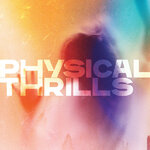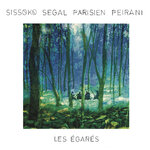Skalap
Well-Known Member
Ay Ay Sailors!
Very sorry about yesterday. It felt to good being back in Portugal and I forgot about our lovely thread. Coimbra brought back good memories and arriving in Lisbon brought another maybe better memories. Anyway, in case you stay all day in your cabin, you probably noticed that we are in... Lisbon aka best city in the world! Everytime I leave Lisbon, first thing that comes to my mind is ...
Seriously, there is not other city in the world where you can have Pastéis de Nata in every corner, great expresso under 1€, sun 260 days a year, beaches, river, forests, great people, great venues, tasteful and strong wines and a very affordable life (as long as you are not working in Portugal). In case you have never been in Lisbon, please go.
First things first! Food! You can eat beautifully in Portugal and Lisbon brings more fusion food than any other city in Portugal. If you want to eat great food while enjoying fantastic views to Lisbon then go to Chapitô à Mesa, Lost In or, on the other side of Lisbon, Ponto Final. To go to this last restaurant, you have to take a 7min boat trip from Cais do Sodré and walk a few minutes. Is it worth it? You tell me :

Second things second! Records! There are many great places to buy records in Lisbon. Most are in the Chiado area (also known as shopping area). Louie Louie is the biggest one and say hi to Hugo if you go there, a couple minutes from there you have Carpet & Snares, Peekaboo and Sound Club Store. Then you have Flur, probably the one you all enjoy the must as they usually sell records you cannot find anywhere else! If you are into jazz, go to LX Factory. Even if you don't like jazz, this place is a must-see in Lisbon and quite close from the Belém area and its monuments. At LX Factory there is a bookstore named Ler Devagar (Read Slowly) where Jazz Messengers occupy the first floor and have a great selection of jazz records.

Oh well! There is so much to do in Lisbon, I could stay there for weeks and never get tired. If you ever go please PM me and I will be happy to give more suggestions depending on what you are looking for. Meanwhile, enjoy as today is our last day in Europe. We leave tomorrow and will most of the next days on the Atlantic. But hey...
See you tomorrow!
Very sorry about yesterday. It felt to good being back in Portugal and I forgot about our lovely thread. Coimbra brought back good memories and arriving in Lisbon brought another maybe better memories. Anyway, in case you stay all day in your cabin, you probably noticed that we are in... Lisbon aka best city in the world! Everytime I leave Lisbon, first thing that comes to my mind is ...
Seriously, there is not other city in the world where you can have Pastéis de Nata in every corner, great expresso under 1€, sun 260 days a year, beaches, river, forests, great people, great venues, tasteful and strong wines and a very affordable life (as long as you are not working in Portugal). In case you have never been in Lisbon, please go.
First things first! Food! You can eat beautifully in Portugal and Lisbon brings more fusion food than any other city in Portugal. If you want to eat great food while enjoying fantastic views to Lisbon then go to Chapitô à Mesa, Lost In or, on the other side of Lisbon, Ponto Final. To go to this last restaurant, you have to take a 7min boat trip from Cais do Sodré and walk a few minutes. Is it worth it? You tell me :


See you tomorrow!

